Stunning Stamford
We are in Stamford for a family reunion- so it makes perfect sense to start our Explorer’s Road journey from here. The lower Southern part we will visit at a later date. A blistering hot Bank Holiday weekend. All the threes- 33.3°C.
Stamford (stone ford) is a stunner. It’s right up there with York, Stratford and Lucca in Tuscany. It is an attractive riverside town 90 miles from London and it became a staging post on the Great North Road.
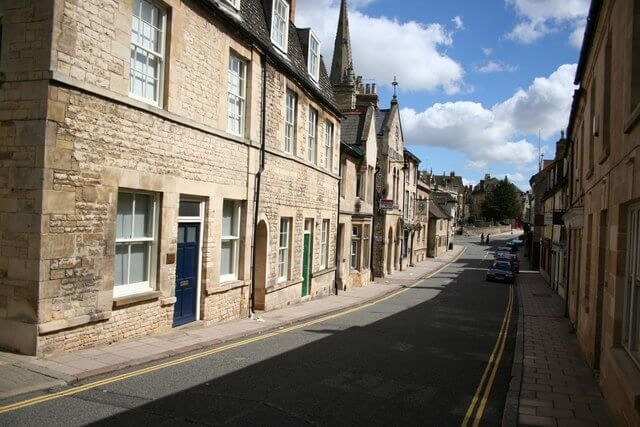 The finest stone town in England? Probably. One of England’s most beautiful towns? Definitely. Stamford feels genteel. Cucumber sandwiches anyone? Hundreds of mellow honey coloured buildings compete for your attention. Hardly any new brickwork to be seen. The town is a warren of alleyways and a maze of streets, some cobbled some not. Hardly surprising that it became the country’s first conservation town in 1967.
The finest stone town in England? Probably. One of England’s most beautiful towns? Definitely. Stamford feels genteel. Cucumber sandwiches anyone? Hundreds of mellow honey coloured buildings compete for your attention. Hardly any new brickwork to be seen. The town is a warren of alleyways and a maze of streets, some cobbled some not. Hardly surprising that it became the country’s first conservation town in 1967.
Stamford is home to the oldest newspaper in Britain. The Stamford Mercury has made its mark on the region since 1695 and left it’s print on countless hands.
It is steeped in history having been home to the Romans, Saxons, Danes and Normans to name just a few. Legend has it that Boudicca chased the Roman Army through the town and across the River Welland in one of the first examples of “girl power”. The Spice Girls would be proud.
Under the Danes it became the capital of the Fens – this area of England became known as The Danelaw with Stamford, Nottingham, Derby, Leicester and nearby Lincoln becoming the 5 regional administrative centres or Burghs. The Norman castle disappeared in 1484 and now lies under a particularly unattractive bus station. Progress?
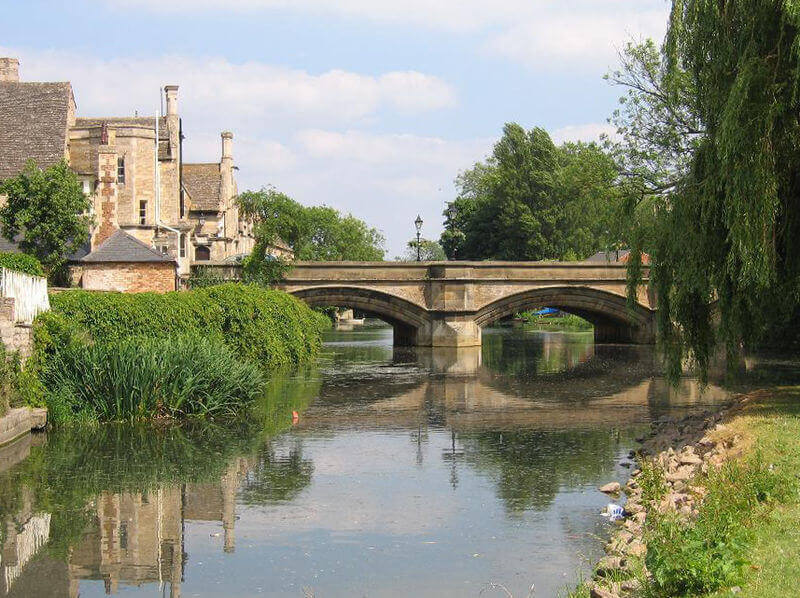 Today tourism is the main earner and people flock from around the world adding to Stamford’s prosperity. There is a great choice of eateries, pavement cafes, superb coffee shops, bakeries, bars and bistros. High street names are present as you would expect but the small trendy shops stand out, all individual in style and in content. All eager to lighten your wallet or purse. Designer clothes and designer jewellery and shops with designs on you. Something different. Visually tempting at every turn.
Today tourism is the main earner and people flock from around the world adding to Stamford’s prosperity. There is a great choice of eateries, pavement cafes, superb coffee shops, bakeries, bars and bistros. High street names are present as you would expect but the small trendy shops stand out, all individual in style and in content. All eager to lighten your wallet or purse. Designer clothes and designer jewellery and shops with designs on you. Something different. Visually tempting at every turn.
In the 13th Century it was in the top ten largest towns in England. A God respecting society the town once boasted 14 churches, two monasteries and four friaries. Only five churches survive today. Looking at the spires pointing upwards towards heaven Stamford’s skyline resembles a mini Oxford.
Being on the Great North Road and at the only place the River Welland could be forded the town prospered in the wool trade. Its wealth was put to good use. 15th Century Browne’s Hospital was founded by one of the town’s richest wool merchants. It is one of the finest medieval alms houses comprising a Jacobean Hall and chapel.
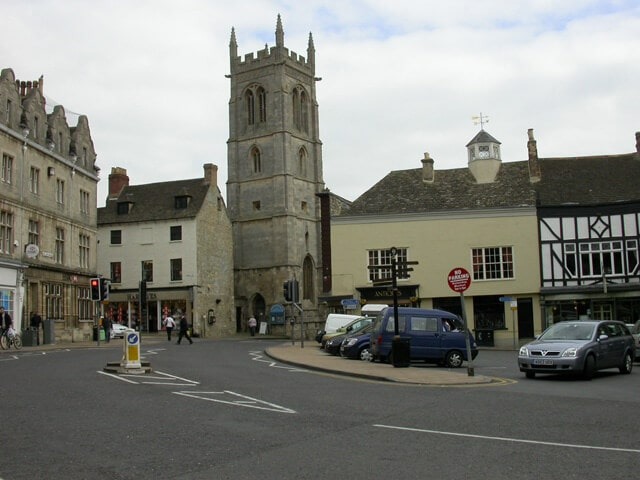 You must take a stroll up Barn Hill which starts from Red Lion Square. Welcome to Pride and Prejudice country. Step back in time as you walk amongst characterful buildings, a pot pourri of architectural styles. Do look up above street level. It is a short street, 300 yards or so long but it is full of living static history. If only house bricks could talk. The street feels and looks different. It is different. Honey coloured stone hewn from local quarries perfectly preserved and not eroded by the industrial revolution which swept across Britain but somehow missed Stamford in a big way. And it’s for this reason that this street has become a media star. The Da Vinci Code. Middlemarch and Pride and Prejudice were all filmed in this exquisite street. We half expected to see a shirt hugging dripping wet Mr Darcy to emerge from one of the gardens but today no joy!
You must take a stroll up Barn Hill which starts from Red Lion Square. Welcome to Pride and Prejudice country. Step back in time as you walk amongst characterful buildings, a pot pourri of architectural styles. Do look up above street level. It is a short street, 300 yards or so long but it is full of living static history. If only house bricks could talk. The street feels and looks different. It is different. Honey coloured stone hewn from local quarries perfectly preserved and not eroded by the industrial revolution which swept across Britain but somehow missed Stamford in a big way. And it’s for this reason that this street has become a media star. The Da Vinci Code. Middlemarch and Pride and Prejudice were all filmed in this exquisite street. We half expected to see a shirt hugging dripping wet Mr Darcy to emerge from one of the gardens but today no joy!
Stamford Bridge? No not that one – that’s further Up North. Nor the other one – home of Chelsea FC. No, the one crossing the Welland here is actually called St Mary’s Bridge. The Meadows are lovely fields skirting the river. A great place to sit and contemplate your navel and Life itself.
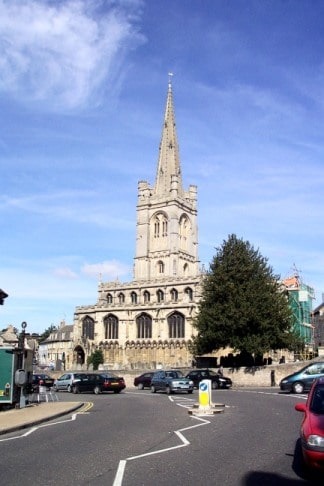 St Mary’s 13th Century spire is magnificent. All Saints spire is over 150 feet high and inside it is adorned with brasses.
St Mary’s 13th Century spire is magnificent. All Saints spire is over 150 feet high and inside it is adorned with brasses.
Daniel Lambert was Britain’s fattest man hitting the scales at 53 stone. Clearly on a see food diet- see food and eat it, lots of it. With a BMI – body mass index- well off the acceptable scale Daniel probably caused his diabetic nurse endless sleepless nights. He died whilst at Stamford races in 1809 and his grave is in St Martin’s churchyard. No dietary will power. His waxwork is in Stamford’s museum and boy did they use plenty of wax.
Sir Malcolm Sargent is a son of the town. He put down his baton for the last time and shuffled off the musical stage of Life in 1967 and is also buried in the town. Interestingly he was not born here. He entered the world whilst mum and dad were away on holiday. Probably the only time his entrance onto the world’s stage wasn’t planned.
Dot dot dash dash. Crime writer Colin Dexter 0BE was born here in 1930 and educated at Stamford school. He is, of course, creator of Inspector Endeavour Morse with his characters featuring in many TV dramas.
Stamford was home to William Cecil – Lord High Treasurer to Elizabeth I. Between 1555 and 1587 he built Burghley House, just outside the town. Today it remains a Tudor house at heart and the grandest and largest house built in the reign of QE1. Beauty in abundance set in an historic setting with gardens designed by Capability Brown- the Alan Titchmarsh of his day.
Stamford is a gem! It deserves a day of everyone’s time. One for the bucket list. Stay at The William Cecil Hotel (check out my review) and eat at Just So Italian on St Mary’s Street. Ciao.
Read the introduction to this journey on The Explorer’s Road.
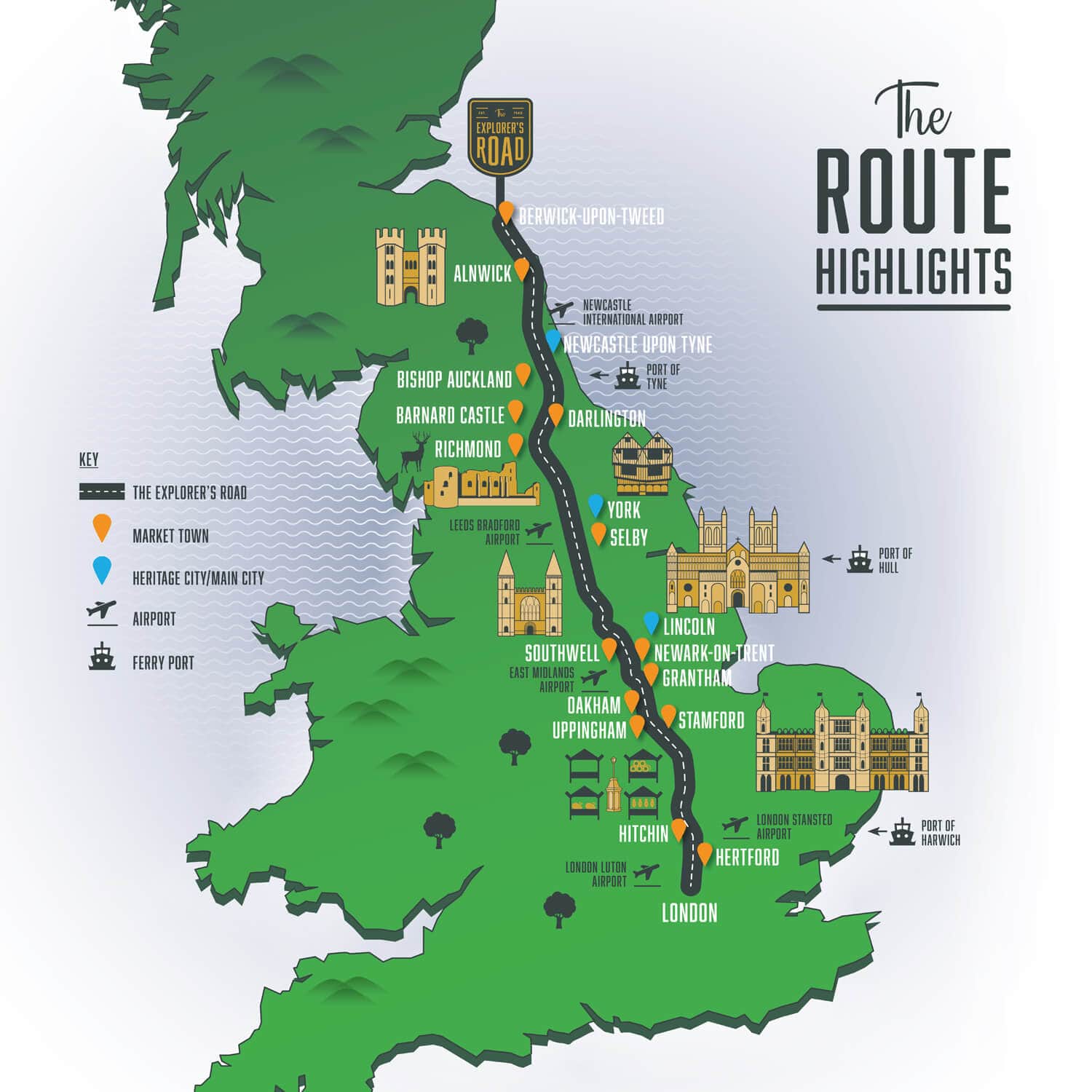
The Explorer’s Road Map courtesy of VisitBritain.com











